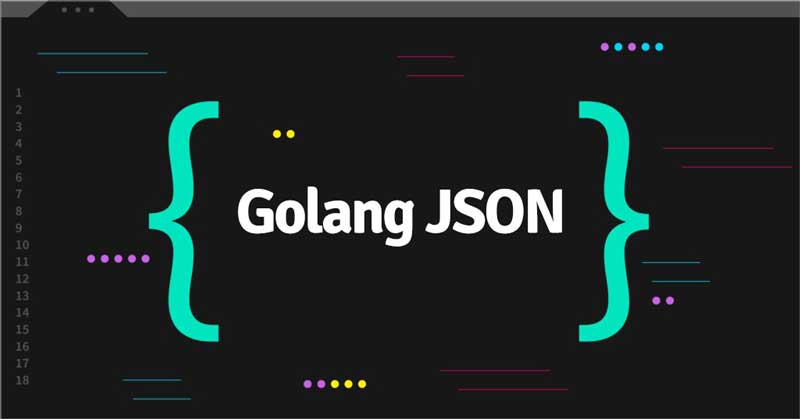Golang JSON
Go language implements encoding and decoding APIs to strive or work with JSON carrying the to and from build-in and custom data types using the encoding or JSON package. This Go language has been also named Golang and its an immensely used format for the data interchange processes.
In this Golang or Go language, JavaScript Object Notation or JSON effort to import data storage systems. By Go language, we can handle the attributes of the JSON with the data types of each attribute. Because JSON is the most crucial data and a few more leads about JSON is very lightweight and flexible in the web development phase process. And as we know on the browser JavaScript Object Notation is the data package and it’s better backing support for our data interchanging case.
Let's move on to the Syntax part of Golang JSON:-
- Name_of_storage - It helps us to place various types of data and these attributes name the storage. For example, if we are building storage for students then we can name this storage section as Student. And this attribute can keep a mixed type of data in one place or storage itself.
- Struct - It helps us as a keyword in the notifies section to go for compiling around a structure data.
- Attribute1 and Attribute2 - Attributes differ with a data type if we store one attribute for a name it's a string data type and another attribute we created for age it’s an integer data type but these two attributes are stored under the JSON student data.
- Data-type - This syntax is used to specify the data type of Attribute 1 and Attribute 2. For example, it illustrates the stored attribute type like if we stored a student's name as a string and its data type will be a string.
For your best reference and understanding, we are mentioned here with clear indent spacing.
JSON to golang struct
type name_of_storage struct {
Attribute1 data-type `json:"section_name"`
Attribute2 data-type `json:"class_name"`
}

JSON in Golang
- First, we have to use the Marshal effect which will take an object and it will rebound to us as JSON of the particular object.
- Before using JSON in this Golang, we need to practice the encoding/JSON data type and it allows us to design JSON storage.
- Upnext, we need to represent the type and name of the JSON which will support us to enhance the program.
- We need to construct the struct to define storage for the JSON, and this struct comes under the keyword phase of go language.
- Under the JSON roof, we need to spell out the attributes and the type of the attributes, it can be any data type.
- After all the processes of defining attributes and types of the JSON storage, whoever will use this JSON they wish to reference the same data type.
Note:- In the JSON storage, we are defined name attribute and its data type is a string and if we try to store an integer value in the same attribute it will send the error notice, which means it will obtain string value only.
Related Q&A section:-
What is the purpose of the JSON in Golang?
JavaScript Object Notation, from this acronym we have to notice one-word OBJECT because it contains all the data in the form of an object and we are also calling it the object.
Where is this JSON used?
This JSON data is used in platforms like Android applications, and Web Applications. It allows us to store fuse type of data inside it.
We hope that this article matches your query and solves it. Scroll once down and see the related articles to master this JSON. Welcome back with a valuable query to enhance your knowledge.
Related Articles: